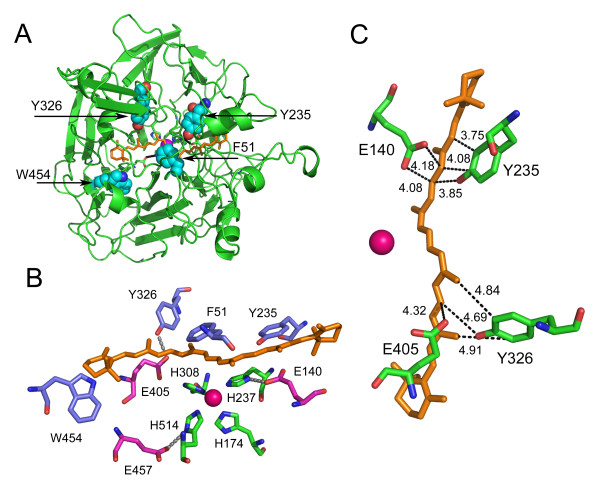Figure 2.
PyMol modeling of BCMO1 on the ACO template. A) Aromatic residues in the binding cleft of BCMO1. Selected aromatic residues of BCMO1 are plotted to equivalent positions on the carbon backbone of the ACO crystal structure [11] by using the PyMol program. Blue, aromatics side chains; red, backbone oxygen; blue, backbone nitrogen; dark pink, iron center; gold, beta-carotene. B) Visualization of the aromatic and acidic BCMO1 residues of the catalytic site on the ACO crystal structure. Aromatic residues of the substrate binding region modeled on the ACO template (PyMol) are shown. Violet, aromatic side chains; pink, acidic side chains; green, iron-coordinating histidines side chains; red, backbone oxygen; blue, backbone nitrogen; red-pink, iron center; gold, beta-carotene. C) Model of the tyrosines and acidic residues in the substrate binding cleft of BCMO1. PyMol model of BCMO1 (tyrosines and "fixing" glutamates in radius <5 Å from β-carotene are shown) on apocarotenoid oxygenase (ACO) template with ab initio mounted β-carotene. A possible hydrogen bond is predicted between Y326/E405.

